

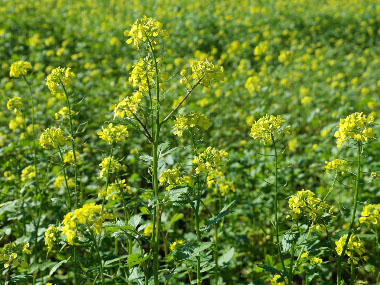

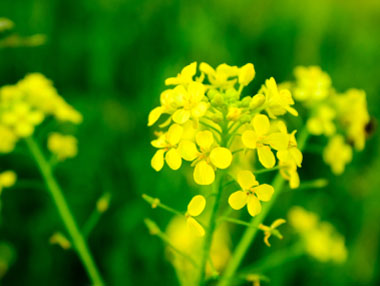
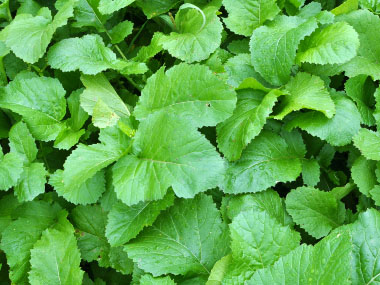
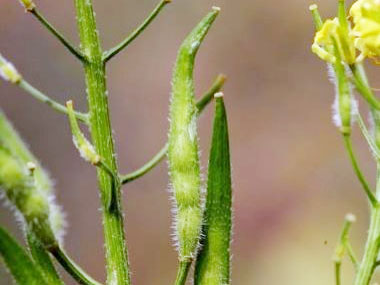
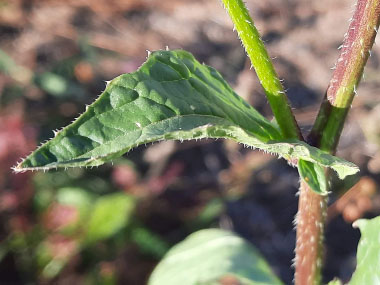
To support our efforts please browse our store (books with health benefits, etc.).
This popular plant originates from the Middle East and Mediterranean region and it actually has been cultivated as a condiment crop for thousands of years. It has made itself at home in many other regions of the world including the US and Canada. Sinapis derives from the Greek word "sinapi" meaning "mustard" and alba means white. It is in the Brassicaceae family, commonly known as the mustard family. It has been also called Charlock, Rough Mustard and Tame Mustard.
Distinguishing Features
Once in full bloom this plant is easy to spot from a distance due to its gangly appearance. However, upon close inspection, it may be another species of mustard. For the beginner, the flower and seed pods are the best way to identify this plant.
Flowers
Yellow flowers occur in small clusters. Flowers have 4 sepals alternating with 4 petals. The corolla is regular, measuring about 1.5 cm (0.6”) across. Each flower has 6 stamens, of which 4 are long and 2 short. Inflorescence an elongating raceme in the fruiting stage. Flowers bloom from spring to early summer and again in early autumn.
 Fields
of Nutrition has medicinal benefits and vitamin/mineral content of White Mustard.
Fields
of Nutrition has medicinal benefits and vitamin/mineral content of White Mustard.
Leaves
Leaves grow alternate and stalked. Leaf blade is coarsely hairy, irregularly pinnately lobed, and the terminal leaflet is large. The uppermost stem leaves are clearly lobed. Some leaves are hairier than others.
Height
This plant can reach to 1 metre (3’) tall, however, typically it is 30 to 60cm (12 to 16”). The stem branches are bristly, but usually are coarsely hairy.
Habitat
White mustard grows in a variety of locations including fields, fallow fields, wasteland, along roadsides, and gardens.
Edible Parts
All aerial parts are edible and can be used to foods like salads, quiches, salads and condiments. You can harvest a large quantity of mustard seeds and powder them for a wild addition to your spices, but this takes a lot of time.
Other Name
Brassica hirta.
Similar Plants
Yellow Rocket, Hedge Mustard.
Winter Survival Food Handbook

PDF Plant Magazines
Types of Wild Food
Geographic Zones Seasons
Disclaimer
EdibleWildFood.com is informational in nature. While we strive to be 100% accurate, it is solely up to the reader to ensure proper plant identification. Some wild plants are poisonous or can have serious adverse health effects.
We are not health professionals, medical doctors, nor are we nutritionists. It is up to the reader to verify nutritional information and health benefits with qualified professionals for all edible plants listed in this web site. Please click here for more information.
Why Edible Wild Food?
- Food costs are rising
- Free, wild food is readily abundant
- Wild food adds nutrition to your diet
- Wild food can help treat various medical conditions





